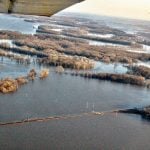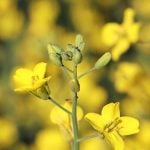Two weeks after he’d finished spraying last year, I got a call from Perry, a producer in central Alberta who farms 900 acres of canola, wheat and barley. He was convinced he’d got a bad batch of chemical.
Upon examining Perry’s canola crop, I discovered healthy lamb’s quarters, wild buckwheat, chickweed, cleavers and dandelion plants. I found a few dead weeds, but most of the damage to the plants was limited to a few large burn spots on some of the leaves.
Read Also

Producers aren’t panicking over tariffs and trade threats
The Manitoba Canola Growers Association (MCGA) surveyed its members this spring to get a sense of how trade uncertainty was…
Perry’s herbicide wasn’t working. Together, Perry and I began investigating factors that could be affecting the herbicide’s ability to suppress weed growth.
We examined fertilizer rate, environmental factors, spraying rate, field and growing conditions, water source, and equipment failure. Both the fertilizer rate and spraying rate were correct. Perry is an experienced producer with good agronomic practices. I hadn’t expected either of these areas to be the source of the problem. When I checked weather records for the spraying period, I also learned that the weather had been fine and no rain had fallen directly after spraying. Perry’s water source and field and growing conditions were also good and normally yielded excellent results. Also, Perry’s canola plants were healthy and growing well.
No other producers had complained about a bad batch of chemical, so product failure was not the issue. But, clearly, the product was not performing properly. Why?
Checking Perry’s sprayer provided our first clue. Perry had recently replaced all of his old nozzles. When making his choice, he considered a more environmentally friendly low-drift air induction nozzle to reduce drift. Unfortunately for him, in this case, it was not the right choice.
Low-drift air induction nozzles reduce drift by creating a larger droplet size. This type of nozzle also uses a lower volume of water. Perry used a contact herbicide to suppress the weeds in his canola crop, and in order to work effectively, contact herbicides need to be applied with good, even coverage.
Contact herbicides kill only the plant parts on which the chemical is deposited. The new low-drift air induction nozzle that Perry chose did not provide the appropriate coverage for contact herbicides. Most air induction nozzles are good for approximately 90 per cent of the herbicide products on the market because those products work systemically, not on contact.
Perry replaced his new nozzles with his old ones and resprayed. To his relief, the weeds in his canola crop disappeared.
Agronomists and chemical representatives often have great tips for best results with their products.
Tracey Burtnack is a sales agronomist at Richardson International in Legacy Junction, Alta.














